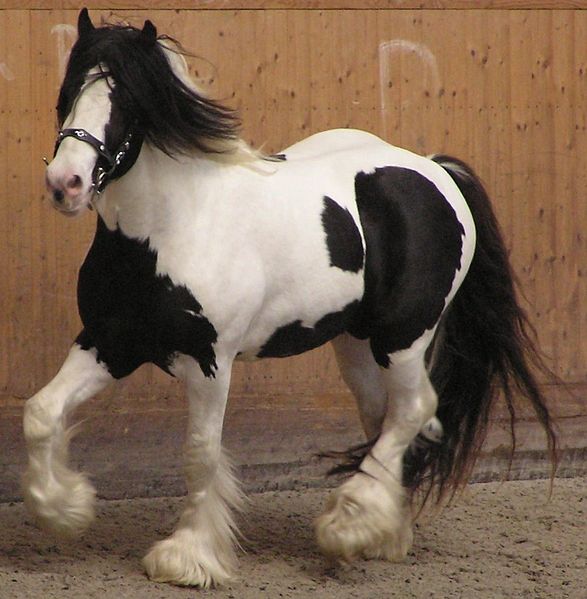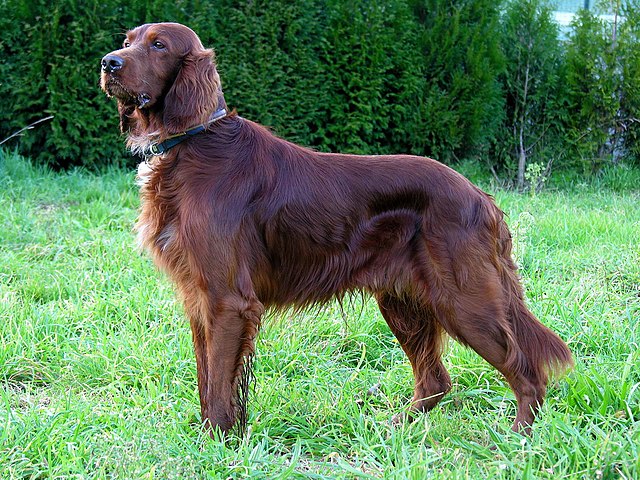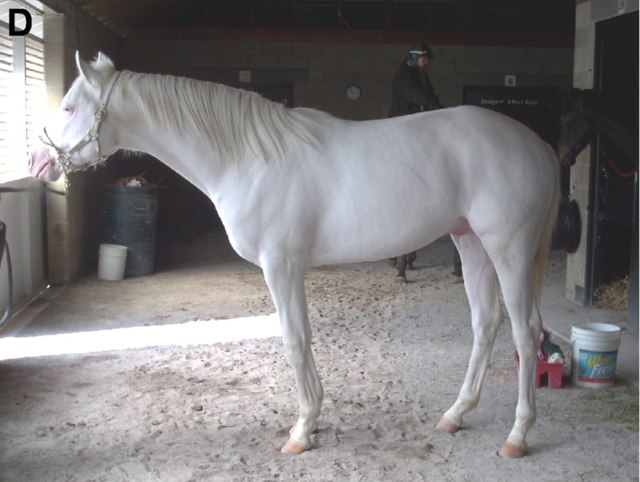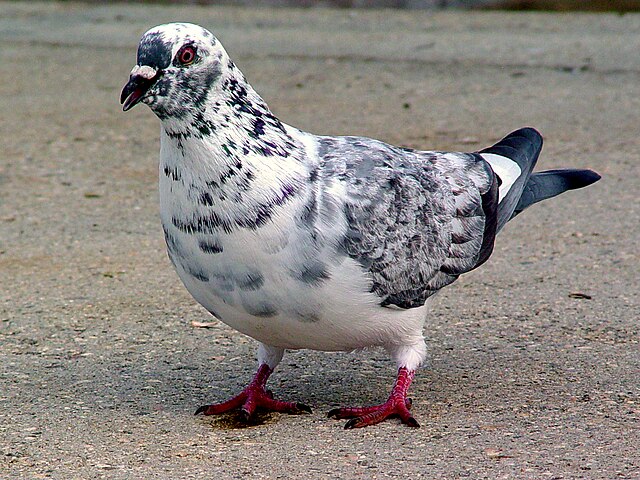A piebald or pied animal is one that has a pattern of unpigmented spots (white) on a pigmented background of hair, feathers or scales. Thus a piebald black and white dog is a black dog with white spots. The animal's skin under the white background is not pigmented.
A piebald horse, Tobiano pattern.
A piebald mare.
Bucovina Shepherd Dog
Red Irish Setter without Piebald spotting
Leucism is a wide variety of conditions that result in partial loss of pigmentation in an animal—causing white, pale, or patchy coloration of the skin, hair, feathers, scales, or cuticles, but not the eyes. It is occasionally spelled leukism. Some genetic conditions that result in a "leucistic" appearance include piebaldism, Waardenburg syndrome, vitiligo, Chédiak–Higashi syndrome, flavism, isabellinism, xanthochromism, axanthism, amelanism, and melanophilin mutations. Pale patches of skin, feathers, or fur can also result from injury.
Leucistic white lions owe their colouring to a recessive allele. Note the eyes and lips remain the normal colour. Studies have shown that the reduced pigment comes from a mutation in the gene for tyrosinase, the same as causes Type I oculocutaneous albinism in humans.
This white horse owes its coloring to a dominant allele (dominant white).
A leucistic rock dove. Both the eyes and legs are still of the normal colour.
Leucistic Texas rat snake (Pantherophis obsoletus)








